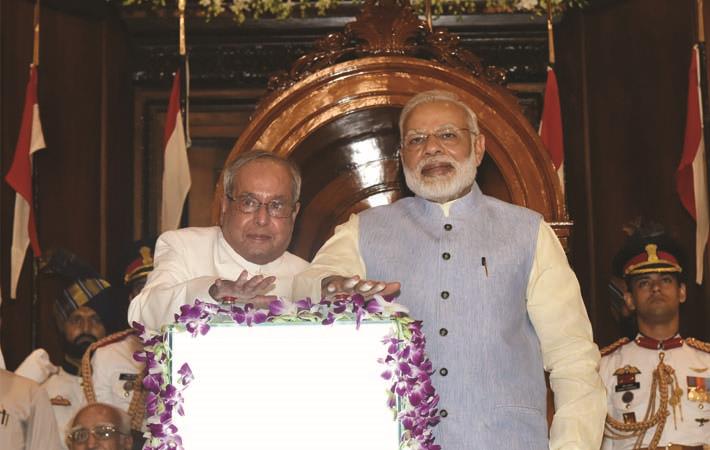India steps into GST era

Describing the path breaking legislation, Modi said, “GST is the taxation system of New India; of the Digital India. It is not merely ease of doing business. It is demonstrating way of doing business. GST is not just a tax reform, but it is a landmark step towards economic reforms. Beyond the taxation revamp, it is also paving the way towards social reforms. It is a vouchment for corruption free taxation system.”
Elaborating his concept of good and simple tax, he said, GST is “Good because it liberates us from layers of taxation, Simple because it is uniformly implemented pan India. There will be ‘one nation, one tax’ and tax system shall be executed in a standard manner in all the states.” All states are slated to gain immensely as they shall now get equal opportunities of development.
“GST is the first of its kind system in the country when both Centre and states shall be putting consolidated efforts in the same direction. We shall be proud of this wonderful system for generations to come as GST is a landmark achievement which is bound to take the nation towards exponential growth.
“GST is a system that ends the imbalances in the country’s trade. It also boosts the exports of the country. This system not only provides impetus to already developed states but also provides the opportunity to the backward states to develop. Our states are enriched with natural resources – look at Bihar, eastern UP, West Bengal, the north east, Odisha. They are all brimming with natural resources. When they will get a single tax regime I can see clearly that whatever deficiency is there those will be removed and this part of the country will move ahead. All the states of India will get equal opportunity for development,” Modi said.
The biggest tax reform since independence, GST will benefit all the stakeholders namely industry, government and consumer. It will lower the cost of goods and services, give a boost to the economy and make the products and services globally competitive, giving a major boost to ‘Make in India’ initiative. Under the GST regime, exports will be zero-rated in entirety. GST will make India a common market with common tax rates and procedures and remove economic barriers. GST is largely technology driven and will reduce the human interface to a great extent. GST is expected to improve ease of doing business in India.
The GST Council, which decided the final structure of GST, has kept the threshold limit for exemption from levy of GST at Rs 20 lakh for the states except for the Special Category, where it is Rs 10 lakh. A four slab tax rate structure of 5 per cent, 12 per cent, 18 per cent and 28 per cent has been adopted for GST. The threshold for availing the Composition scheme is Rs 75 lakh except for special category states where it is Rs 50 lakh and they are required to file quarterly returns only. Certain categories of manufacturers, service providers (except restaurants) are out of the Composition Scheme.
Other important feature of GST is that it envisages all transactions and processes to be done only through electronic mode, to achieve non-intrusive administration. This will minimise tax payers’ physical interaction with the tax officials. GST provides for the facility of auto-populated monthly returns and annual return. It also facilitates the taxpayers by prescribing grant of refund within 60 days, and provisional release of 90 per cent refund to exporters within 7 days. Further facilitation measures include interest payment if refund is not sanctioned in time, and refund to be directly credited to bank accounts. There are also comprehensive transitional provisions for ensuring smooth transition of existing taxpayers to GST regime, credit for available stocks, etc. (RKS)
Fibre2Fashion News Desk – India
































-Ltd..jpg?tr=w-120,h-60,c-at_max,cm-pad_resize,bg-ffffff)





.jpg?tr=w-120,h-60,c-at_max,cm-pad_resize,bg-ffffff)
.jpg?tr=w-120,h-60,c-at_max,cm-pad_resize,bg-ffffff)






